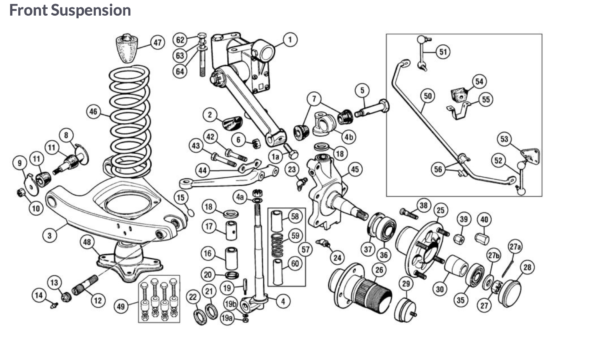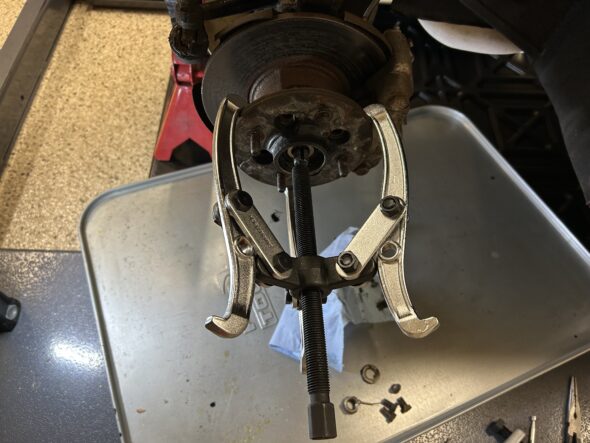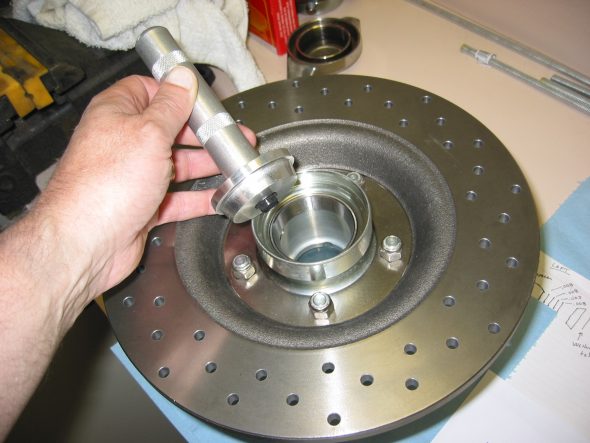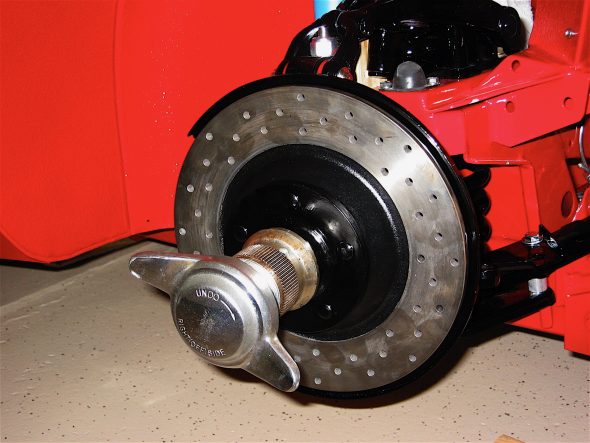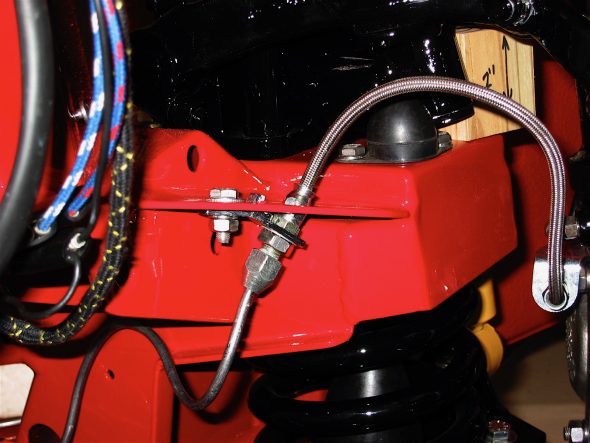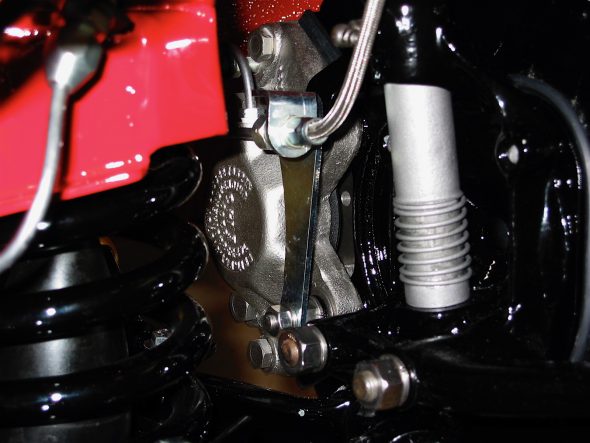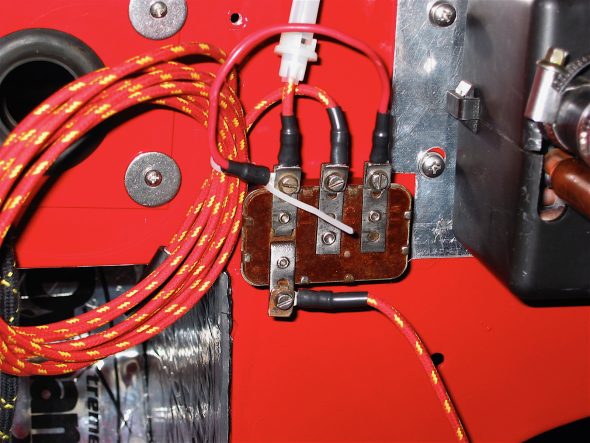Having completed the work on the refurbishment of the rear axle and suspension it is now time to turn to the front suspension. Our plan will be to remove and refresh or replace the suspension components on the right side of the car, then after building back the passenger side of the car we will go through the same process on the LH side. My car was converted to front disc brakes shortly after we purchased it around 1999.
https://vimeo.com/777904083/768f53fb47
The Episode Twenty-seven video shows the deconstruction and removal of the RH front suspension. The following steps are addressed in the video:
1:00 – The proper tie rods
1:45 – Draining and removal of radiator
4:00 – shock absorber removal
4:40 – Brake caliper removal and stowage
5:45 – Grease cap, split pin, castle nut, tab washer and brake rotor/hub removal
6:40 – Dust shield removal
7:20 – Upper Trunnion/bolt
8:00 – Coil spring, spring perch, and lower shock mounting plate removal, tie rod end separation
11:20 – Fulcrum bolts, washers and bushings
11:20 – Cotter pin, fulcrum pin and king pin removal from the “A” arm assembly
Now it is time to order some parts and clean and paint some of the components we will be reusing.
The RH suspension components that were not completely disassembled as they were removed from the car were dismantled on the work bench. All parts were cleaned and painted with POR 15. A hub puller was purchased and used to separate the brake rotor and hub.
After the hub was separated from the brake rotor, the oil seal and bearings could be removed from the hub. New bearings and seals will be installed in the rebuild.
Video Episode Twenty-eight shows the completion of the dismantling process for the RH front suspension and the removal of the LH front suspension is begun.
https://vimeo.com/780172337/d31b642b97
The following steps are addressed in the video:
0:00 – Steering arm removal from the stub axle
1:05 – Spring dust tube
1:25 – Spring pan and bolts
1:45 – Upper Trunnion
2:00 – Hub separation from rotor
3:00 – Oil seal and bearing removal
3:38 – Bushing removal from the “A” arm
4:05 – Hub puller is used to separate hub and rotor
4:28 – Begin RH side front suspension removal

